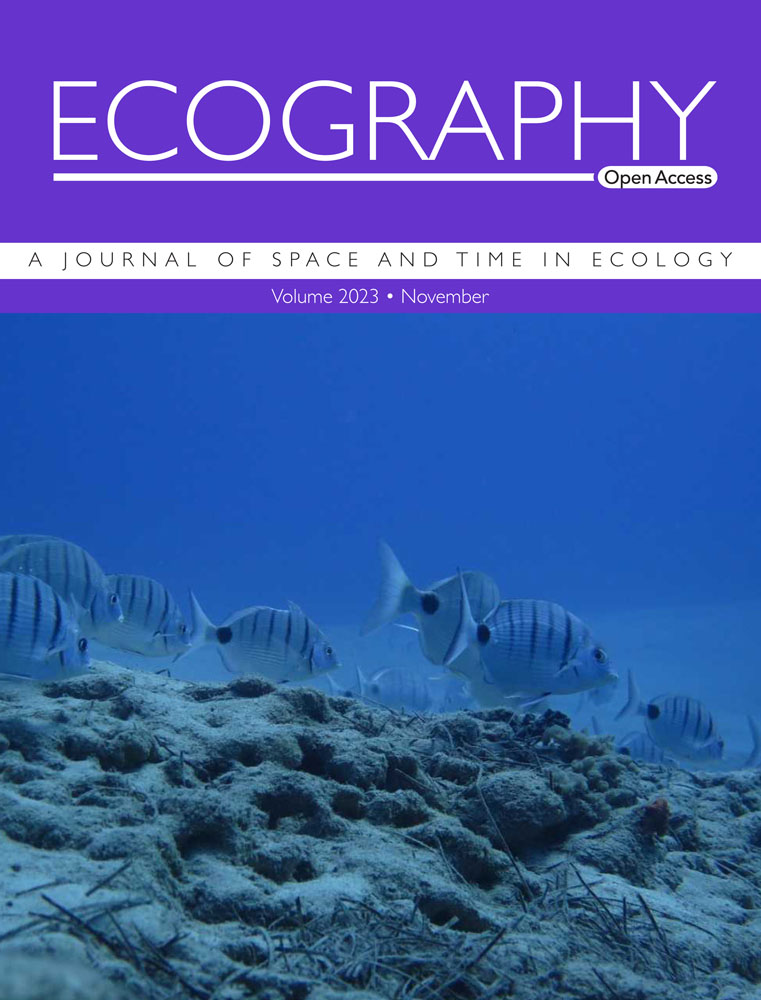SDM meets eDNA: optimal sampling of environmental DNA to estimate species–environment relationships in stream networks
IF 5.4
1区 环境科学与生态学
Q1 BIODIVERSITY CONSERVATION
引用次数: 0
Abstract
Species distribution models (SDMs) are frequently data-limited. In aquatic habitats, emerging environmental DNA (eDNA) sampling methods can be quicker and more cost-efficient than traditional count and capture surveys, but their utility for fitting SDMs is complicated by dilution, transport, and loss processes that modulate DNA concentrations and mix eDNA from different locations. Past models for estimating organism densities from measured species-specific eDNA concentrations have accounted for how these processes affect expected concentrations. We built off this previous work to construct a linear hierarchical model that also accounts for how they give rise to spatially correlated concentration errors. We applied our model to 60 simulated stream networks and three types of species niches in order to answer two questions: 1) what is the D-optimal sampling design, i.e. where should eDNA samples be positioned to most precisely estimate species–environment relationships? and 2) How does parameter estimation accuracy depend on the stream network's topological and hydrologic properties? We found that correcting for eDNA dynamics was necessary to obtain consistent parameter estimates, and that relative to a heuristic benchmark design, optimizing sampling locations improved design efficiency by an average of 41.5%. Samples in the D-optimal design tended to be positioned near downstream ends of stream reaches high in the watershed, where eDNA concentration was high and mostly from homogeneous source areas, and they collectively spanned the full ranges of covariates. When measurement error was large, it was often optimal to collect replicate samples from high-information reaches. eDNA-based estimates of species–environment regression parameters were most precise in stream networks that had many reaches, large geographic size, slow flows, and/or high eDNA loss rates. Our study demonstrates the importance and viability of accounting for eDNA dilution, transport, and loss in order to optimize sampling designs and improve the accuracy of eDNA-based species distribution models.求助全文
约1分钟内获得全文
求助全文
来源期刊

Ecography
环境科学-生态学
CiteScore
11.60
自引率
3.40%
发文量
122
审稿时长
8-16 weeks
期刊介绍:
ECOGRAPHY publishes exciting, novel, and important articles that significantly advance understanding of ecological or biodiversity patterns in space or time. Papers focusing on conservation or restoration are welcomed, provided they are anchored in ecological theory and convey a general message that goes beyond a single case study. We encourage papers that seek advancing the field through the development and testing of theory or methodology, or by proposing new tools for analysis or interpretation of ecological phenomena. Manuscripts are expected to address general principles in ecology, though they may do so using a specific model system if they adequately frame the problem relative to a generalized ecological question or problem.
Purely descriptive papers are considered only if breaking new ground and/or describing patterns seldom explored. Studies focused on a single species or single location are generally discouraged unless they make a significant contribution to advancing general theory or understanding of biodiversity patterns and processes. Manuscripts merely confirming or marginally extending results of previous work are unlikely to be considered in Ecography.
Papers are judged by virtue of their originality, appeal to general interest, and their contribution to new developments in studies of spatial and temporal ecological patterns. There are no biases with regard to taxon, biome, or biogeographical area.
 求助内容:
求助内容: 应助结果提醒方式:
应助结果提醒方式:


